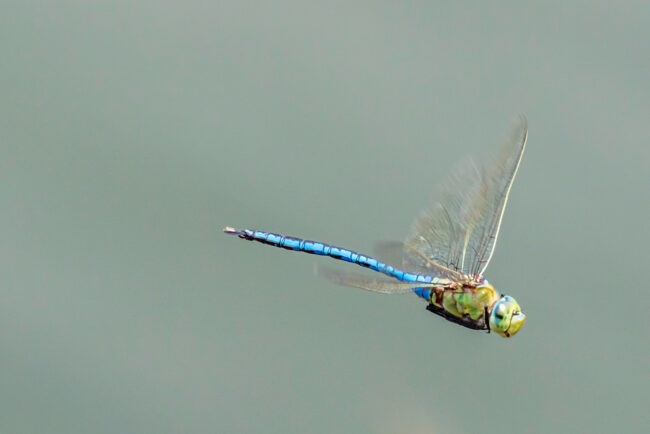
by SUSAN M. BRACKNEY
April showers bring much more than May flowers— they also contribute to seasonal wetlands, a special kind of habitat that only exists part time. These soggy spots make perfect breeding grounds for amphibians, including spring peepers and American toads. They’re also important way stations for migratory birds, butterflies, dragonflies, and more. Wetlands serve people, too, naturally capturing sediment and filtering pollutants that might otherwise end up in our water supply.
Knowing all of that, you might understand why I was dismayed when the Environmental Protection Agency and the Department of the Army recently announced significant changes to the Navigable Waters Protection Rule. According to Jon Devine, Natural Resource Defense Council director of federal water policy, “[The regulation] dramatically restricts what kinds of water bodies the Clean Water Act protects.”

A common green darner dragonfly. Photo by iStock.com/THEGIFT777
The changes come in accordance with President Donald Trump’s 2017 Executive Order on Restoring the Rule of Law, Federalism, and Economic Growth by Reviewing the “Waters of the United States” Rule.
“The rule excludes rain-dependent streams and countless wetlands and ponds from a variety of pollution prevention, control, and cleanup requirements in the law,” Devine explains. “These exclusions make the law weaker than it has been in several decades.”
Such regulatory rollbacks make citizen science work increasingly vital, and, no matter how much—or how little—free time you may have, there are plenty of ways you can contribute.
For instance, would-be citizen scientists just looking to get their feet a little wet might consider joining the Migratory Dragonfly Partnership (MDP). Participants agree to monitor area ponds for North America’s five main dragonflies. These include common green darners, variegated meadowhawks, black saddlebags, and wandering and spot-winged gliders.
Ideally, you’ll want to choose a nearby pond or wetland that you can regularly access. To get started, visit the MDP website, create a free login, and download and study the MDP Monitoring Protocols manual. You’ll use the MDP’s online wizard to report the presence or absence of target dragonfly species. Data collected include the monitoring location, date, your arrival and departure times, and observation notes, plus supporting photos and/or video.
Folks with more time to volunteer might want to try Hoosier Riverwatch. This robust program has been around since 1996, and it teaches participants 18 years and older how to measure the biological, chemical, and physical health of local waterways. Trained Riverwatchers then actively monitor and report on water quality via the group’s website.
Basic training takes a full day, and advance registration is required. Advanced-level training sessions are also available. Upcoming basic training sessions will take place in April, June, and September. Visit the Hoosier Riverwatch website for information on the program, and the Hoosier Riverwatch program on the Indiana Department of Environmental Management website for details on training sessions.






